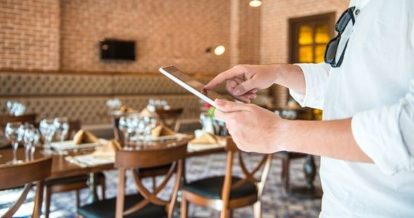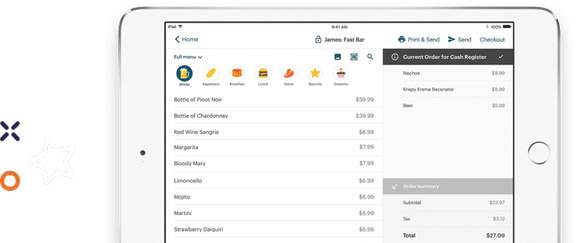As COVID-19 restrictions are lifted across North America, many diners are eager to return to their favorite restaurants. However, guest safety is still a top priority and many restaurant are turning to restaurant reservation software to navigate the tricky business of fully reopening their dining rooms.
Reservation software not only gives you a way to control the flow of diners in and out of your restaurant, but it also provides an easy way to keep an eye on capacity – both of which are important in keeping staff and guests safe.
In fact, restaurant reservations and the technology that supports it is so valuable that public officials and organizations such as the American Industrial Hygiene Association (AIHA) recommend adopting a reservations-only model or call-ahead seating.
To highlight the popularity of the use of reservation software, TouchBistro’s 2025 State of Restaurants Report reveals that 28% of operators plan on investing in significantly or somewhat more in the next six months on a reservation platform solution. So if you’re one of those restaurant owners who is new to restaurant reservation software, you’ve come to the right place. In this article, we’ll cover everything you need to know about finding the right restaurant reservation system ahead of your restaurant reopening, including:
- What restaurant reservation software is
- The benefits of reservation software in the wake of COVID-19
- How an online reservations program can keep staff and customers safe as you reopen
Let’s dive in.

What Is Restaurant Reservation Software?
Traditionally, accepting and managing restaurant reservations has been a pretty low-tech operation. Diners simply call up a restaurant to see if a table is available at a specific time and then their booking is recorded in a log book.
Though simple, the call ahead reservation model is not without its challenges. On the one hand, limiting reservations to phone calls means that diners can only reserve tables when someone is there to answer the phone. And even if a diner is able to get through, coordinating seating times and tables manually becomes increasingly complex as more reservations pour in – something that can lead to errors and unhappy diners.
These challenges are precisely why restaurant reservations software has become so popular. Unlike the call ahead model, reservation software allows customers to book tables online and helps restaurants manage those bookings in real time. Everything is done digitally so customers can change or cancel their reservations through the same online portal, and restaurants can send emails or SMS text messages to confirm bookings. In other words, you can manage every step of the reservation process, all in one place.

Learn how a restaurant reservations system can help your business thrive.
10 Benefits of Reservation Software for Reopening
If you compare call ahead vs reservation platforms, it’s clear that going digital is the best choice for a post-vaccine world. Not only does restaurant reservation software help venues better manage the flow of diners, but it can also play a role in protecting public health.
Below, we cover 10 ways an online reservation program can help you safely reopen your dining room.
1. Online Access
One of the biggest challenges that restaurants are facing is a lack of consistent foot traffic. Though stay-at-home orders and dine-in restrictions have largely been lifted, many diners are still spending a lot of time at home. And with fewer diners on the street, restaurants without an online presence have become largely invisible.
Restaurant reservation software helps to make restaurants visible again by meeting consumers where they are right now: online. Though diners may not be walking through their neighborhood for a bite to eat, they are Googling it. With platforms like TouchBistro Reservations, you can accept reservations through your website, Google, or TouchBistro’s web and mobile discovery apps. Adding online reservations not only helps you show up in local restaurant searches, but it also gives diners more ways to discover your venue – all without stepping outside.

2. Digital Waitlists
Health professionals agree that the transmission of COVID-19 primarily occurs when an individual comes in close contact with someone who has respiratory symptoms. As a result, crowded restaurant spaces, such as waiting areas and bars, present a major challenge when it comes to mitigating the spread of the virus.
Restaurant reservation software can easily solve the issue of crowded waiting areas by moving the experience online. With reservation software or dedicated waitlist apps, guests can add themselves to a restaurant’s waitlist remotely, allowing them to wait for an open table in their home, car, or another area. Just keep in mind that waitlist management isn’t always a standard feature with every reservations software package – as made clear in this TouchBistro vs OpenTable review.
3. Booking Management
Though every state and province has issued different rules for reopening, some have put caps on capacity to better allow for physical distancing. For restaurants that are used to packed dining rooms, this presents a new challenge of how to monitor capacity and avoid exceeding these limits.
One of the biggest benefits of restaurant reservation software is that it gives you a precise way to monitor venue capacity. For instance, most reservation software has tools like flow control that allow you to manage the number of covers or parties that can book reservations at a given time.
Similarly, you can use software to set maximum capacity limits, which caps the number of guests that can be seated in your restaurant at any point throughout a shift. As guests leave, the software updates to show your current available capacity. Using these tools, along with your table availability, you can ensure that you don’t exceed government-mandated capacity limits and risk your diners’ safety.
4. Floor Plan Management
Another challenge created by COVID-19 is the changes to your restaurant floor plan. Even in states and provinces that have lifted dining restrictions, many still have limits on how close diners can be or how many people can be seated at a table together.
A good reservations program will sync directly with the digital floor plan in your POS, giving you the flexibility to block off tables and save alternate layouts as you adjust to new guidelines. Table reservation software can also help you optimize the restaurant seating that is available. With fewer tables available, you can’t afford to have empty seats. Reservation software allows diners to book tables in real-time so any free tables can be claimed – even days or weeks in advance.

5. Custom Reservation Notes
Controlling capacity is one thing. Easing diners’ anxiety is a completely different challenge. According to a 2021 report by Morning Consult, many diners still feel more comfortable dining outdoors, with 74% of U.S. adults said they currently feel safe sitting down for a meal outside, compared to 65% who said so about indoor dining.
This data shows that many diners are looking forward to returning to restaurants; they just want to be assured that health and safety is a top priority. Online restaurant reservations can address these worries by giving diners a platform to ask questions and express any concerns they might have. When reserving a table online, there’s an opportunity for diners to add custom reservation notes about everything from their food allergies to asking if they can be seated outdoors when they visit.
6. Two-Way Communication
For diners, part of the concern around restaurant reopenings is not knowing what to expect when they dine out again – especially in states and provinces that still have some dining restrictions in place.
Similar to custom reservations notes, two-way communication with guests can help to answer diners’ burning questions. For example, TouchBistro Reservations allows you to send email reminders and SMS texts to customers, so you can communicate in real-time. This direct line of communication allows you to explain how your floor plan may have changed or inform guests about new caps on the length of reservations, so there are no surprises the day of. Some software even lets you collect feedback from guests after their visit, which can give you a better idea of how your new service is being received.

Learn how a restaurant reservations system can help your business thrive.
7. Reduce No-Shows
Prior to the pandemic, no-shows were already a concern for restaurateurs. But with heightened anxieties around health and safety, no-show rates are expected to become an even bigger problem. Not to mention, less walk-in traffic means restaurants will have fewer opportunities to recoup the cost of no-shows.
Though it’s impossible to completely eliminate the risk of no-shows, restaurant reservation software can help to keep that number low. With reservation software, SMS and email reminders and confirmations are sent to diners automatically. These reservations can even be synced with a diner’s calendar to ensure they don’t forget about their upcoming booking.
And even if a customer can’t make it, an online reservations program provides an easy way for them to change or cancel their booking, so you don’t continue to hold a table for them.

8. POS Integration
From major menu adjustments to adding online ordering, nearly every restaurant had to adjust its business model during the pandemic. And with continued changes to diner behavior, it can be tough to wade through all the numbers to know what’s working and what’s not.
This is where restaurants can benefit from a reservation system that’s integrated with their restaurant POS. Integrated reservation software means that all reservation information flows directly to your POS to ensure that your front of house and back of house have a complete picture of what’s going on. This is especially helpful for restaurants working with smaller on skeleton crews, training new staff, or working out the kinks of a modified service.
9. Advanced Reporting
It goes without saying that COVID-19 has been unprecedented situation. And while industry experts can estimate how many diners will be eager to return to restaurants, there’s no way to really know. To put it bluntly, most operators are going to be running blind for at least the first few months of a restaurant reopenings in a post-vaccine world.
With so little information available, any source of data will be a gold mine for restaurateurs as they fully reopen their dining rooms. A big advantage of using a restaurant reservation system is that you get that reliable data about how many people are coming in and when. With reports and analytics at your fingertips, you can monitor how the business is doing in the weeks and months after you reopen, and adjust service accordingly.
10. Record of Diners
One of the best tools in managing the COVID-19 pandemic has been contact tracing. This method involves tracking down those infected with COVID-19, finding out who they’ve been in contact with, and then notifying those contacts about their potential exposure, so they can self-isolate and get tested.
For restaurants in places where COVID-19 continues to linger, reservation software can provide a solution to the issue of contact tracing. Diners are already used to giving their name and a phone number and/or email address in order to make a reservation. If you implement a reservations-only policy in your restaurant, you can easily use the software to keep a log of every diner. Even if you’re still accepting walk-ins, most reservation software allows you to create guest profiles on the spot. Without an online reservations program, keeping a manual log of diners can quickly get out of hand, and mistakes can mean putting public health at risk.
Reopening a restaurant after months of closure or reduced service is no easy task. Physical distancing, strict limits on venue capacity, and mandatory guest records all present unprecedented challenges for even the most seasoned restaurateurs. Though restaurant reservations software is no silver bullet, it can help to ease the weight of these new challenges. No longer just a “nice-to-have,” reservation software can be an essential part of the tricky transition to a post-vaccine world.






